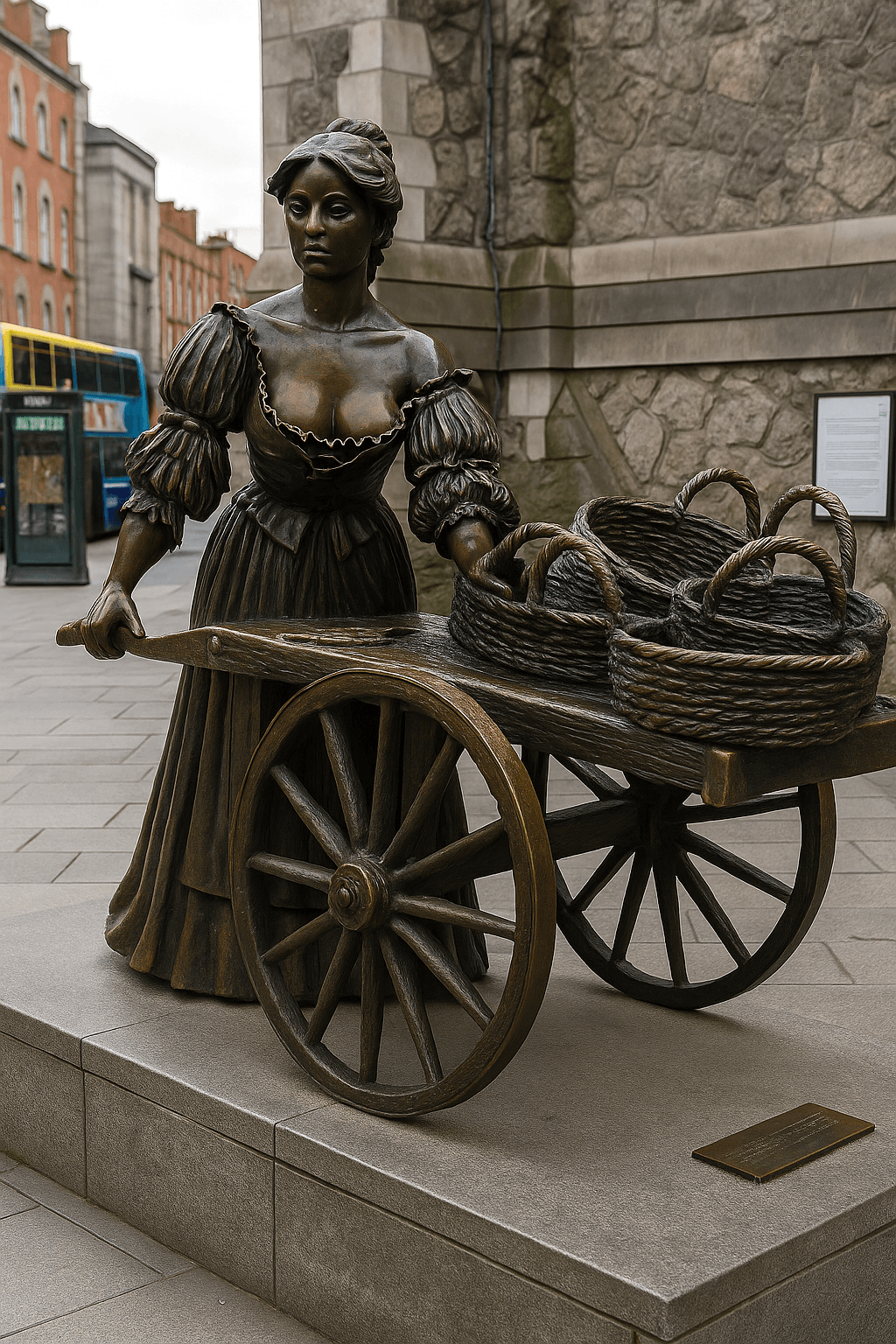Molly Malone statue ‘perfectly safe’ Says Dublin City Council
DUBLIN, IRELAND — Dublin City Council has confirmed that the famous Molly Malone statue on Suffolk Street is structurally sound and “well fixed in place,” despite an earlier inspection suggesting significant damage.
Concerns were raised this week after inspection records revealed the sculpture was “unstable” with multiple broken fittings. A report by Bushy Park Ironworks, expert metalworkers commissioned by the council, found that two of the pins securing the statue were completely destroyed.
However, Ray Yeates, Arts Officer with Dublin City Council, reassured the public today that following extensive safety checks, engineers have confirmed the statue “isn’t going anywhere.”
“There are more than two fixings—about five, as far as I’m aware—under the cart and the statue itself,” Yeates said during an interview on RTÉ’s Morning Ireland. “There’s a small bit of vibration due to the number of people leaning on it, but it’s completely safe.”

Engineers reportedly performed stress tests including applying weight and pushing against the statue to ensure its stability. Mr Yeates also noted that liquid concrete may be added to the plinth in the long term for extra reinforcement.
The statue, a popular attraction since its installation in 1988, has become a tourist magnet—not just for photos, but also for the peculiar tradition of rubbing the statue’s chest for luck. This practice has caused significant discoloration of the bronze, prompting city officials to explore long-term preservation options.
According to Yeates, the council is currently considering several possible responses:
- Leaving the statue in place and performing ongoing maintenance.
- Adding a protective barrier or raising its height—though that may pose safety risks if tourists attempt to climb it.
- Relocating the statue indoors, possibly to better preserve it.
The rubbing tradition, believed to have begun around 2012, is thought to have been popularized by a creative tour guide and has since become a viral tourist ritual.
“We’re trying to understand why people feel the need to touch the statue,” Yeates said. “This is a global issue—statues around the world get touched—and we may just have to accept it and plan repairs accordingly.”
The council will spend the coming week consulting with stakeholders, including tourists and local residents, before making a final decision on the statue’s future.







